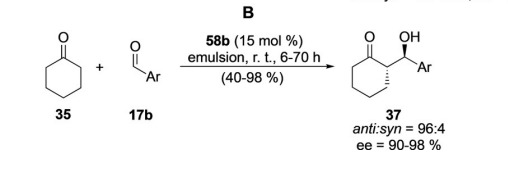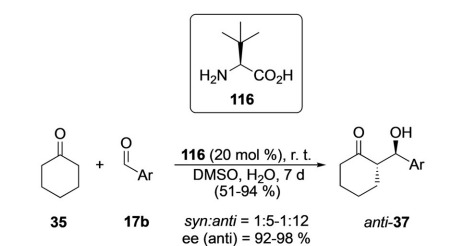Unnatural amino acids refer to amino acids that do not exist in animals and plants, are rare in nature, or are artificially synthesized. They are derivatives of natural amino acids and are mainly divided into two categories. One category is amino acid analogs with structures similar to those of natural amino acids, which are reflected in the opposite configuration, such as D-alanine, D-phenylalanine, D-serine, etc. The other category is amino acid substitutes with structures that are quite different from natural amino acids.
Unnatural amino acids have diverse side chain groups and stereochemical properties. With the development and promotion of science and technology, they have been widely used in many fields such as medicine, food, and chiral synthesis. The diverse functional groups carried by UAAs, such as carbonyl, azide, alkynyl, alkenyl, amide, nitro, phosphate, and sulfonate, allow proteins to undergo more complex and diverse modification reactions.
UAAs have strong specificity and little effect on the original structure of proteins, making them a powerful tool for studying protein structure and dynamic conformation. For example, the introduction of fluorinated amino acids at key sites of proteins can effectively observe the signals of proteins in nuclear magnetic resonance, thereby simplifying the data collection and analysis process.
In addition, the introduction of unnatural amino acids can change the physical and chemical properties of proteins, such as pH and temperature stability. In practical applications, UAAs have been proven to effectively improve the performance of enzymes, including increasing enzyme activity and stability. For example, replacing the 309th natural tyrosine of phosphotriesterase with L-(7-hydroxycoumarin-4-yl)ethylglycine or L-(7-methylcoumarin-4-yl)ethylglycine can further increase the catalytic activity of the enzyme for the hydrolysis of paraoxon by 8 to 11 times on the basis of its original high efficiency. In addition, the incorporation of fluorinated amino acids can significantly enhance the thermal stability of enzymes. For example, para-fluorophenylalanine phosphatase can still function normally even at a high temperature of 60°C without any impact.
UAAs have broad application prospects in the field of biomedicine and are also the main components of synthetic peptides and peptide-like drugs at home and abroad.
Since the discovery of penicillin, antibiotics have saved countless lives and are hailed as one of the most important medical achievements of the 20th century. However, the overuse of antibiotics in human and animal health has spawned the emergence of antibiotic-resistant bacteria, especially multidrug-resistant "super bacteria", which have posed a serious threat to human and animal health.
Antimicrobial peptides (AMPs) are a class of basic polypeptide substances with antimicrobial activity. They have attracted attention for their broad-spectrum antimicrobial characteristics and their lethality to certain drug-resistant pathogens. The diverse structures of non-natural amino acids can significantly change the structure and function of AMPs, such as hydrophobicity, charge density, and activity, after replacing natural amino acids in antimicrobial peptides. Kang's research group not only greatly improved its antimicrobial activity against penicillin-resistant bacteria by replacing lysine with ornithine in the Cbf-14 peptide, but also reduced its cytotoxicity to mammalian cells. It is worth mentioning that non-natural amino acids can also enhance their antimicrobial efficacy, cell selectivity, and peptide stability by modifying the C or N termini of antimicrobial peptides. For example, N-acetylation modification significantly enhanced the antimicrobial efficacy and stability of W-MreB.
Non-natural amino acids not only have a wide range of applications in the field of biomedicine, but also exhibit excellent organic catalytic properties. They act as organic catalysts, which are generally non-toxic and stable compared to other catalytic methods, and are insensitive to moisture and air, and show good tolerance to many functional groups.
In the field of asymmetric synthesis, α-unnatural amino acids can effectively replace metal catalysts to achieve efficient asymmetric synthesis reactions.
The Barbas team used (2S,4R)-4-hydroxyproline as a catalyst to successfully catalyze the Mannich reaction between straight-chain fatty aldehydes and imines, obtaining Mannich bases with excellent yields and stereoselectivity.
In addition, trans-4-hydroxyproline ester is amphiphilic and is a surfactant. Zhong's team used this property to catalyze the asymmetric condensation reaction of cyclohexanone and aromatic aldehydes in an emulsion system. This strategy not only has high stereoselectivity, but also achieves good reaction yields, providing a new and powerful tool for asymmetric synthesis.
Another class of unnatural amino acids, L-tert-leucine and its derivatives, also exhibit the ability to catalyze asymmetric synthesis, effectively catalyzing the asymmetric condensation reaction of cyclohexanone and aromatic aldehydes with good yield and stereoselectivity.
Unnatural amino acids are widely used and are compounds with important value and broad prospects in many fields. Although their synthesis process is quite challenging, with the continuous advancement of science and technology, efficient and green synthesis methods will surely be developed in the future, thereby promoting the continuous development of the field of unnatural amino acids.
Haofan Bio has been deeply involved in the research and development of unnatural amino acids for many years and currently has hundreds of unnatural amino acid products. The following table shows some of the unnatural amino acid products. Customers with needs are welcome to call us for inquiries.
References:
[1] Zhao Mei, Liu Xinyuan, Qi Xianghui, et al. Research progress in protein synthesis based on unnatural amino acids[J]. Food and Fermentation Industries. 2024, 8.
[2] Li Haining, Zhang Hongbing, Jia Zhenhua, et al. Application and biosynthetic strategy of unnatural amino acids[J]. Biotechnology Bulletin. 2023, 39, 43-55.
[3] Narancic, T.; Almahboub, SA; O'Connor, KE Unnatural amino acids: production and biotechnological potential[J]. World J Microbiol Biotechnol. 2019, 35, 67.
[4] Wang, XH; Yang, XM; Wang, QE; Meng, DM Unnatural amino acids: promising implications for the development of new antimicrobial peptides[J]. Critical Reviews in Microbiology. 2023, 49, 231-255.
[5] Agirre, M.; Arrieta, A.; Arrastia, I.; et al. Organocatalysts Derived from Unnatural α-Amino Acids: Scope and Applications[J]. Chem. Asian J. 2019, 14, 44-66.
[6] Zhong, L.; Gao, Q.; Li, C.; et al. Direct catalytic asymmetric aldol reactions on chiral catalysts assembled in the interface of emulsion droplets[J]. J. Catal. 2007, 250,360-364.



